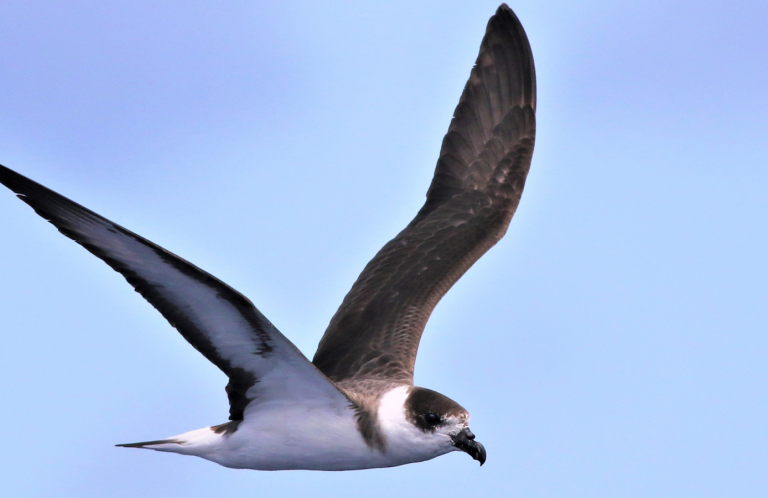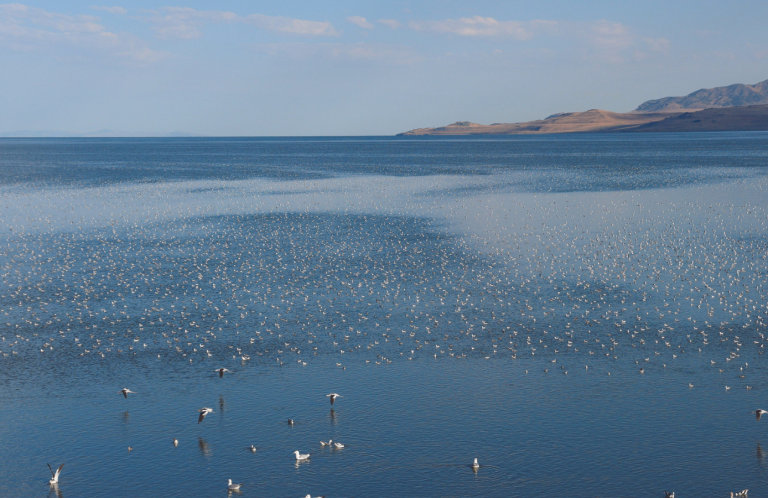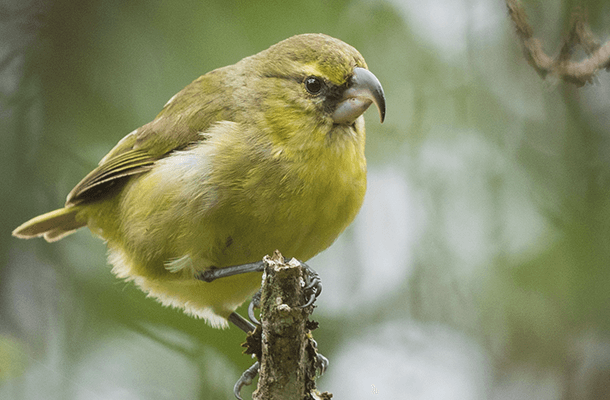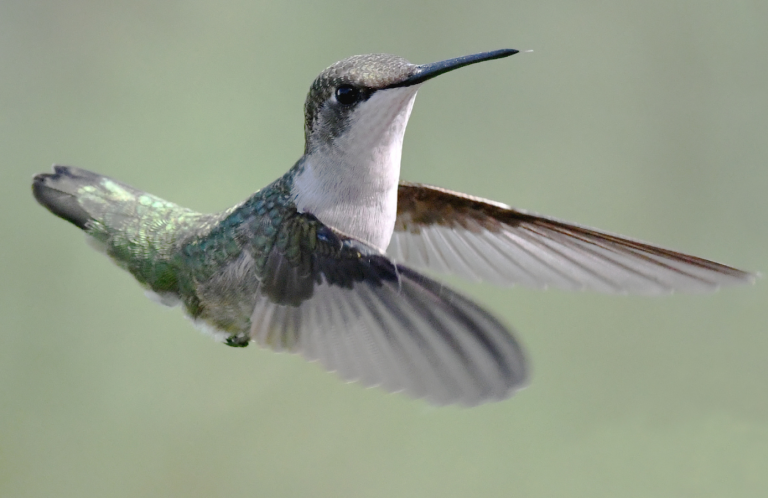In Mexico, Grassland Birds Thrive Under New Approach to Cattle Ranching
For millennia, herds of bison roamed the Chihuahuan Desert of northern Mexico to feast on mile after mile of grass. Dozens of bird species coexisted with the large animals, which cropped the grass just to the birds' liking, fertilized the soil with their manure, and aerated the land with many millions of hooves.
By the 19th century, Chihuahua had become a bonanza for ranchers, who made the most of the rich native grasses as prime forage for cattle. But eventually heavy grazing took a toll on the land. Much of the area once covered in grass grew barren and dry.

Restored grasslands on Coyamito Ranch in Chihuahua, Mexico. A different approach to cattle grazing has breathed new life into an area so essential for grassland birds. Photo by Lilia Vela
The birds suffered, too. Roughly 85 percent of grassland birds that breed in the northern Great Plains of the United States spend their winters in the Chihuahuan Desert. As habitat in both their breeding and wintering grounds disappears, grassland species have become one of the fastest-declining suites of birds native to North America.
Overgrazing by cattle, it is clear, has created problems. But now conservationists see grazing as part of a solution: By strategically moving cattle from pasture to pasture within a rancher's property, domestic livestock can mimic the positive effects on the land that bison had centuries ago.
Much is at stake. Grasslands now occupy less than 10 percent of the Chihuahuan Desert. As ranchers fall on hard times, many choose to sell their land. Agriculture is expanding into the region, threatening to reduce or eliminate remaining grasslands so critical to the survival of more than 20 species, including the Sprague's Pipit, Baird's Sparrow, Chestnut-collared Longspur, Lark Bunting, and Long-billed Curlew.
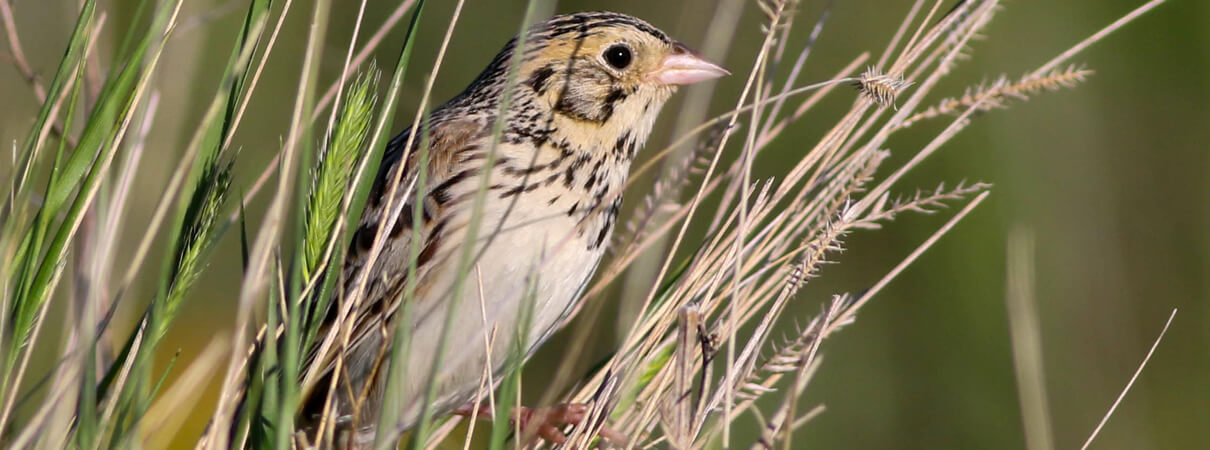
Grasslands are critical to the survival of more than 20 bird species, including Baird's Sparrow. Photo by Mike Parr
So far, American Bird Conservancy and Mexican partner organization Pronatura Noreste have improved habitat for these birds on nearly 70,000 acres of working lands in an area called Valles Centrales. Working closely with ranchers to adopt rotational grazing practices, Pronatura has installed electric fences to create separate pastures that allow ranchers to be strategic about where their cattle graze, when, and for how long.
The goal is to encourage landowners to improve the ecological condition of their land in a way that benefits grassland birds. The birds need the help, but so do the ranchers. Drought and poor profits have taken a severe toll on the region's ranching community, says Mauricio De la Maza, Conservation Director of Pronatura Noreste.
But the ranchers taking part in the project are already starting to see results. And birds are returning, De la Maza says. He hopes ranchers will view the birds as indicators that their land is growing healthier: “If the birds are visiting them, they're doing their stuff right, and will make more profits,” he says.
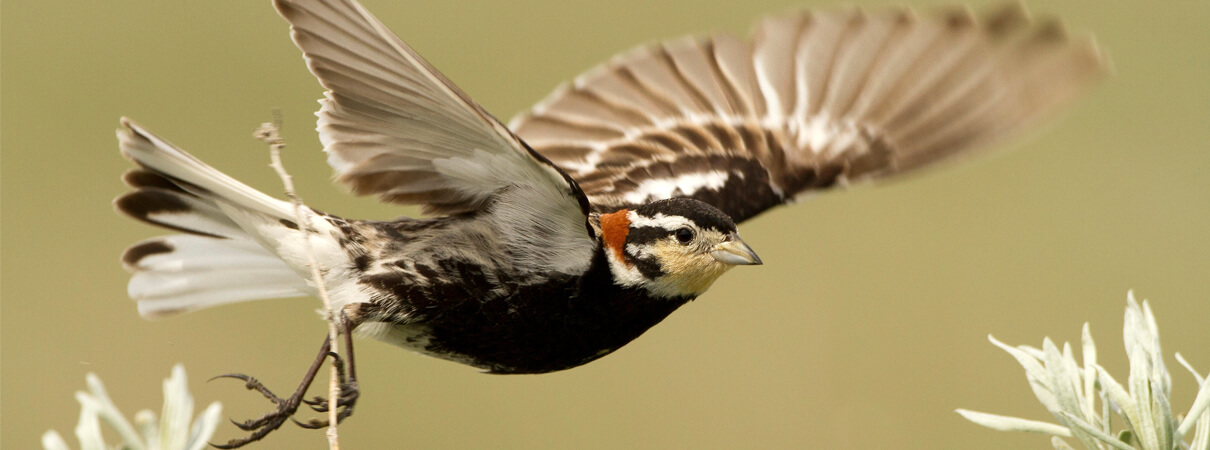
Chestnut-collared Longspur is one of many grassland species that benefits from rotational grazing of cattle. Managed well, the grazing can mimic the effects of bison, which historically roamed this area. Photo by All Canada Photos/Alamy Stock Photo
Indeed, the more diverse the wildlife, the better off ranchers will be, says Alejandro Carrillo, who owns Las Damas ranch in the Valles Centrales. If birds and other animals disappear, he says, it suggests the environment has become less resilient.
“If you lose one species, you may think, ‘Well, that doesn't matter. I'm not really selling birds.' But I don't think that's the way it works,” he says. “Everything relates to everything.”
The Grassland Gang
Every winter, the Sprague's Pipit makes its home in the Chihuahuan Desert. Eating insects and sometimes seeds, the small, brown songbird needs open, treeless grasslands to survive. But not just any grass will do: Sprague's Pipit likes it short.
A few years ago, scientists with the Bird Conservancy of the Rockies conducted research to characterize the habitat needs of priority grassland birds in Chihuahua such as the Sprague's Pipit. The results were compelling. Some of the birds' basic needs—say, the composition of grasses, trees, and shrubs—were very similar to what cattle need, too.
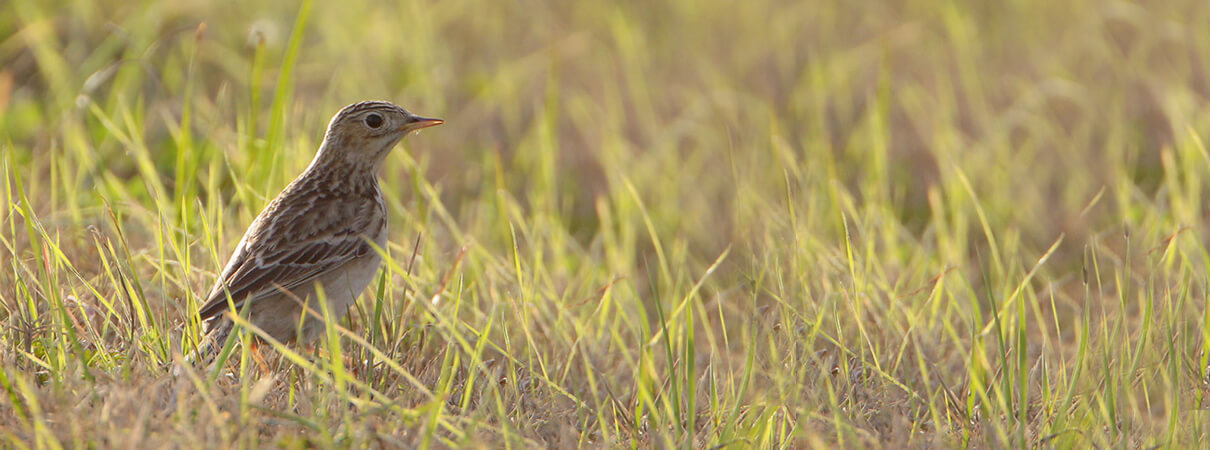
Sprague's Pipit spends the winter in Mexico's Chihuahuan Desert and likes short grass. Ranchers are helping to create this vital habitat by rotating their cattle. Photo by Greg Lavaty
It was a game-changing discovery, De la Maza says. Rotational grazing had been around for decades, but this research suggested that smart grazing could create the right habitat for birds. Equally encouraging was the realization that ranchers would also benefit. Their cattle would have better grass, and more of it, on which to graze.
“What makes sense ecologically also makes sense economically,” De la Maza says.
Still, this new approach would require a tremendous shift in how grazing had been done in Chihuahua for generations. In the preferred practice across much of the region, De la Maza says, “You throw your cattle in and let them do whatever they want to do.” It's like inviting children to a birthday party and serving them cake, fish, and vegetables, he says. “You say, ‘OK kids, eat whatever you like.' They'll go for the cake.”
The same is true for cattle. In an open range, cattle will naturally head straight for the tastiest grasses. Having consumed those, they quickly move on to the next-best, and so on. Before long, the ground is bare.
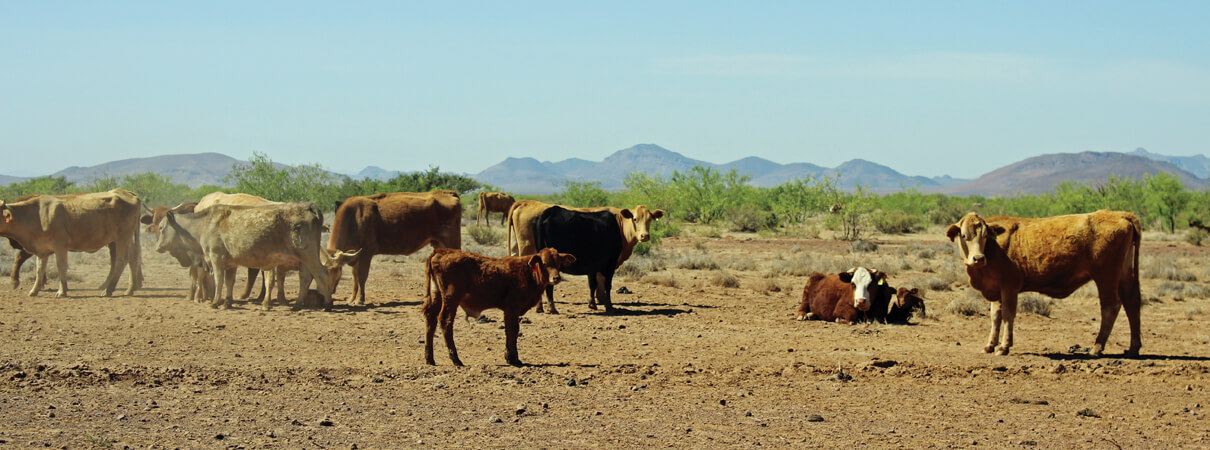
Traditional cattle management techniques and drought had eliminated wintering habitat for migrant grassland birds on the Coyamito Ranch, pictured here in February 2014. Photo by Pronatura Noreste
It triggers a damaging cycle for cattle, people, and birds. Sparse grasses or the wrong grasses mean cattle don't get proper nutrition, requiring ranch operators to spend money on supplemental food and nutrients. The quality of their ranch land plummets along with the fertility of their cows. It becomes hard to survive.
Meanwhile, grasses fail to regenerate under constant pressure. Parched dirt is unable to absorb precious rainfall. Mesquite and other woody shrubs take root. And the grassland birds arrive each fall to find their land diminished.
Putting Plans Into Action for Grassland Birds
A few years ago, Pronatura began reaching out to ranchers in the Valles Centrales. With support from ABC, the organization had identified key areas that were important for the birds, primarily in two regions —Valles Centrales and Janos—as well as a biological corridor connecting the two. In all, the two regions cover an area that is larger than Yellowstone and Yosemite combined, roughly 3.7 million acres.
The goal: enhance habitat for the dwindling number of grassland birds by engaging landowners in a new way to graze cattle.
Pronatura's Iris Banda works directly with ranchers. She has found that many are willing to hear about new incentives to improve their land and incomes. “By having a few conversations with the landowner, you can figure out if they are truly interested in the project but also committed to change their operations,” she says.
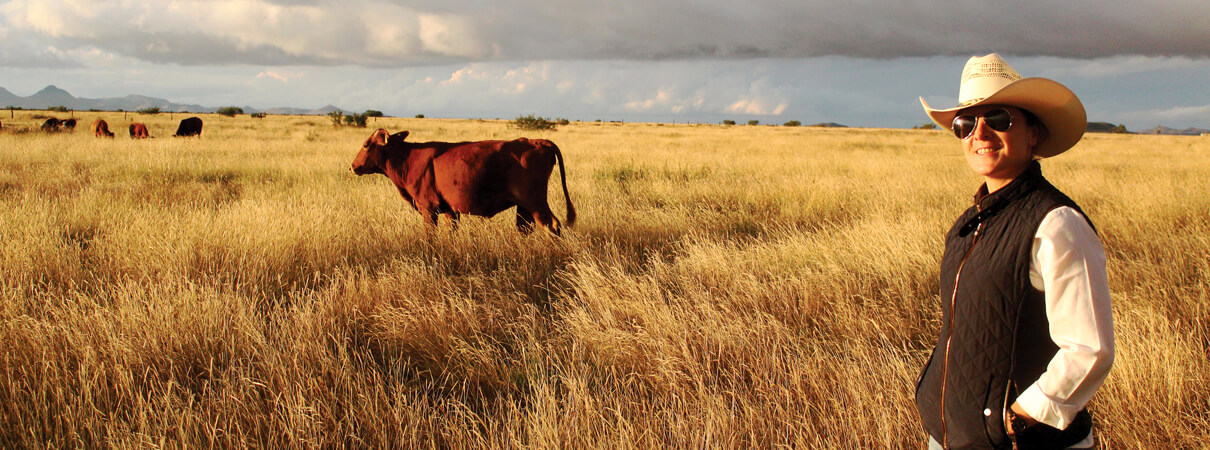
By October 2014, less than a year later, the Coyamito Ranch's grasslands were healthy and vibrant thanks to a new approach to grazing. Pictured here is Lilia Vela, Project Coordinator for Pronatura Noreste. Photo by Pronatura Noreste
Although every case is different, Banda describes a general approach: Pronatura staff meet with a landowner to explain the program and sign a contract to implement the new grazing practices. Then, they diagnose the condition of the ranch's natural resources and its cattle, proposing practices that will improve cattle production and also benefit migratory birds.
The last step is the hardest, but also the most important: putting the plan into action. Generally this involves creating more pastures; placing a water source in each; tilling soil and removing woody shrubs like mesquite; and controlling erosion.
Ranchers are full of questions, Banda says. When will I see results? Why do my cows still jump the electric fence? If I see plenty of birds all the time, why do you say their populations are decreasing? Aren't all birds the same?
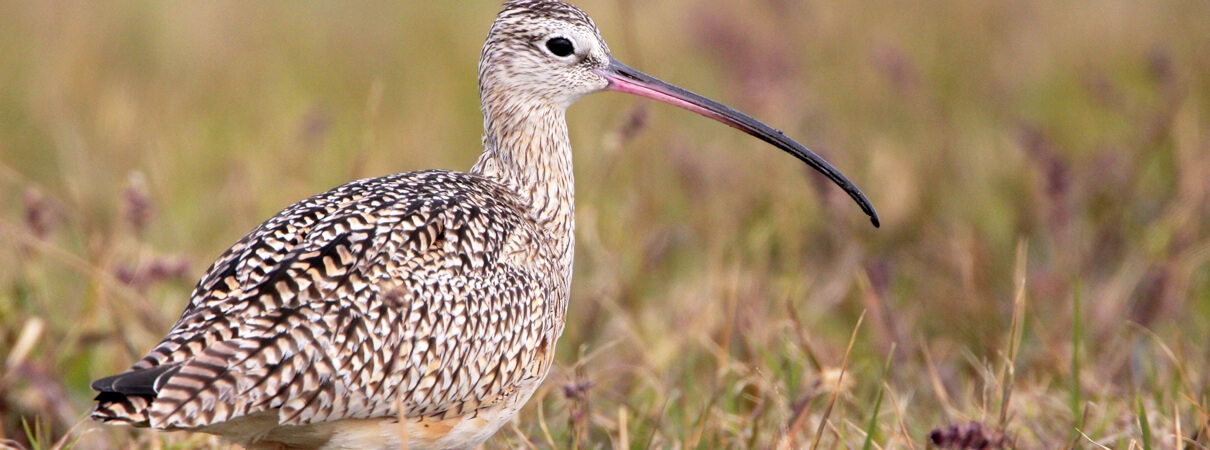
Rotational grazing has been around for decades, but research suggests that smart grazing can create the right habitat for birds such as Long-billed Curlew. Photo by Greg Lavaty
At his Las Damas ranch, Carrillo had already been taking what he calls a holistic approach to grazing when he partnered up with Pronatura two years ago. Now, with the organization's help, he has cordoned off his land into about 100 pastures. Within the next three years, he hopes to have 180, giving him the option to graze his cattle on each pasture for only two days a year if that's what the birds need.
Taking a cue from the area's wildlife, he has also changed the ranch's calving season so that it is in sync with nature. In Chihuahua, deer and other animals give birth in late summer to coincide with the rains. So instead of the haphazard calving schedule of previous years, cows at Las Damas now give birth in August: More rain means taller grasses, greater nourishment for mothers and calves, and less strain on the land.
Across the region, the project is revealing how communities can rally and change to help birds, says Andrew Rothman, director of ABC's Migratory Bird Program. “We think of conservation, and we think of the [bird] species,” he says. “But conservation is really about people.”
In Chihuahua, he adds, “These are people who care about their land because their families have been ranching it for a long time. There's been a restored sense of hope.”
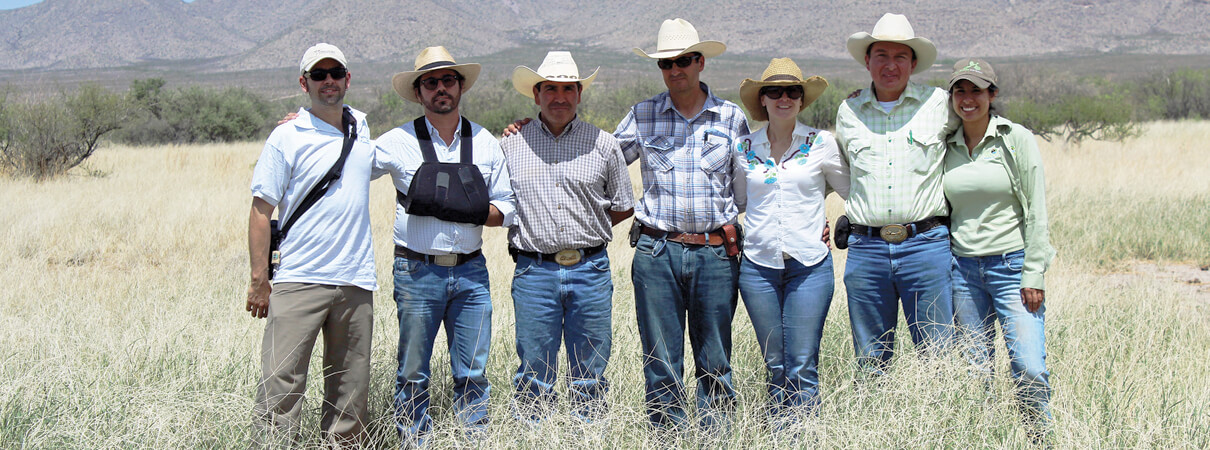
The grasslands team in February 2014. From left to right: Andrew Rothman, ABC; Mauricio De la Maza, Pronatura; Ruben Borunda and Alejandro Carrillo, both partner ranchers; Lilia Vela, Pronatura; Gerardo Bezanilla, a consultant; and Iris Banda, Pronatura. Photo by Mauricio De la Maza
De la Maza agrees, describing the project as a rare conservation victory in which both ranchers and birds win. Results have come more quickly and on a greater scale than conservationists anticipated.
But the next challenge will be scaling up the program. Although effective, it is also expensive to run. Government policies will be essential, De la Maza says. “We need to understand the economic, social, technical, and business aspects of this,” he says, “so we're successful with our vision for the Chihuahuan grasslands.”
This means government subsidies for ranchers to purchase electric fences. Limitations on the extraction of water, a valuable resource in the desert. Land-use planning. Protection of land corridors between grasslands.
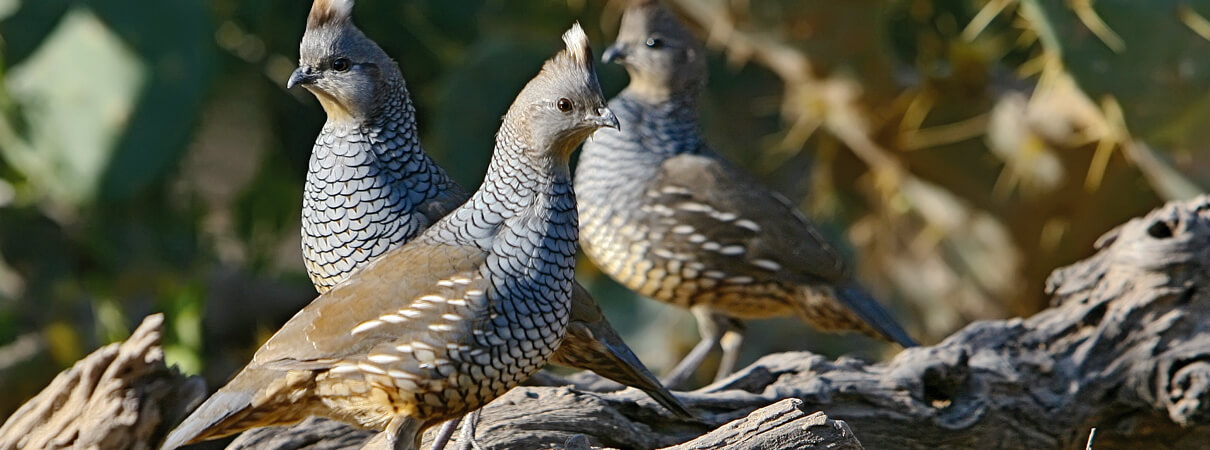
Rancher Alejandro Carrillo has noticed dozens of Scaled Quail on his property following his efforts to use rotational grazing. Photo by Ashok Khosla
Carrillo is looking ahead, too. More and more, he says, conservation of grasslands will rely upon the relationships between ranches. He's glad to make the changes. But it's more effective if his neighbors do it, too. “You don't want to be an island of grass in the desert,” he says.
This year, Carrillo noticed Greater Roadrunner and Scaled Quail on his property. It used to be that he'd see one, maybe two quail. Now, there are 50 to 100. Reports show that Carrillo's Las Damas now has Baird's Sparrow and Grasshopper Sparrow. Although Pronatura gave him a booklet to identify these and other grassland species, Carrillo admits the small brown birds are hard to spot. “I can tell you a few by name, but there are so many,” he says with a laugh.
“It's not only that we like the birds,” Carrillo says of the changes he's made in recent years. “We are interested in creating an environment where they can sustain themselves, and they are part of the whole.”
Editor's Note: This article appeared in the fall 2015 edition of Bird Conservation magazine. ABC's work in the Chihuahuan grasslands is made possible by the generous support of Jonathan Franzen and with the support of the Rio Grande Joint Venture. Additional funding for this project was provided in part by the Neotropical Migratory Bird Conservation Act.
 Libby Sander is Senior Writer and Editor at American Bird Conservancy. As a journalist, she covered a variety of beats in Chicago and Washington, D.C., writing news stories and award-winning features for The New York Times, the Washington Post, and The Chronicle of Higher Education. You can follow her on Twitter at @libsander.
Libby Sander is Senior Writer and Editor at American Bird Conservancy. As a journalist, she covered a variety of beats in Chicago and Washington, D.C., writing news stories and award-winning features for The New York Times, the Washington Post, and The Chronicle of Higher Education. You can follow her on Twitter at @libsander.





































